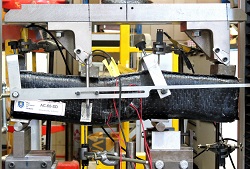Catching up with SHDS: Working towards stronger earthquake defences
SHDS developed coupling beams, designed to be the first element in a building to absorb earthquake damage, thus protecting the remaining structure. Their design makes them easily replaceable, minimising costly repairs, while speeding up community re-occupancy. Last year, project coordinator and Marie-Curie Fellow Dr David Escolano (now based at the Department of Mechanical Engineering, Polytechnic University of Madrid) told us that the team had tested more than 300 cylinders/cubes, before finding the optimum mix capable of resisting similar loads to traditional counterparts while exhibiting four times more deformation capacity. At that time, the project was not ready for commercialisation, so what has happened in the intervening time? Speaking to Dr Escolano recently for ‘Life After’, he points out that, “Innovations in the construction sector, and especially in structural engineering, are difficult to apply, since we are dealing with the structural integrity of buildings and infrastructures.” In practices, this means a necessarily rigorous testing process, “To answer critical questions such as durability, bond, long-term performance – including creep and fatigue – and response to accidental actions, such as fire and impact,” as Dr Escolano elaborates. Towards this end, the team are currently analysing the data which came from the tests, which will enable them to “develop analytical and numerical constitutive models for HDC and optimise the design of Highly Deformable elements,” as Dr Escolano puts it. This will provide crucial input for the creation of the guidelines, which will feed into the building standards and codes that must be developed in tandem with any new materials and engineering solutions. In the meantime, to reach commercialisation Dr Escolano explains, “We are disseminating our results in professional forums and have found a lot of interest from fellow scientists and practising engineers, which greatly spurs us on towards being market ready.” So whilst there is still a way to go to reach commercialisation, there has been definite positive progress since the formal end of the SHDS project!
Countries
United Kingdom



